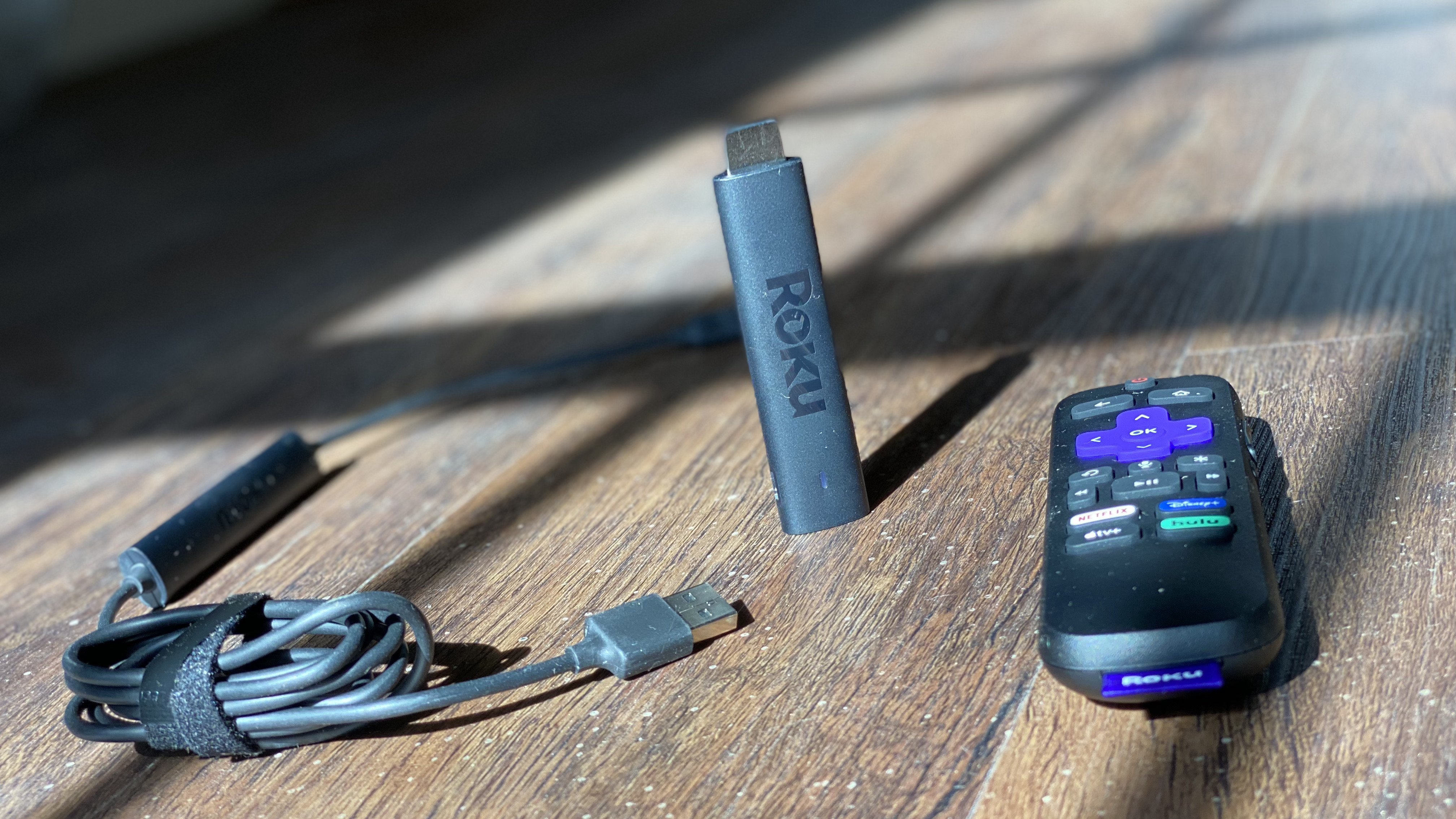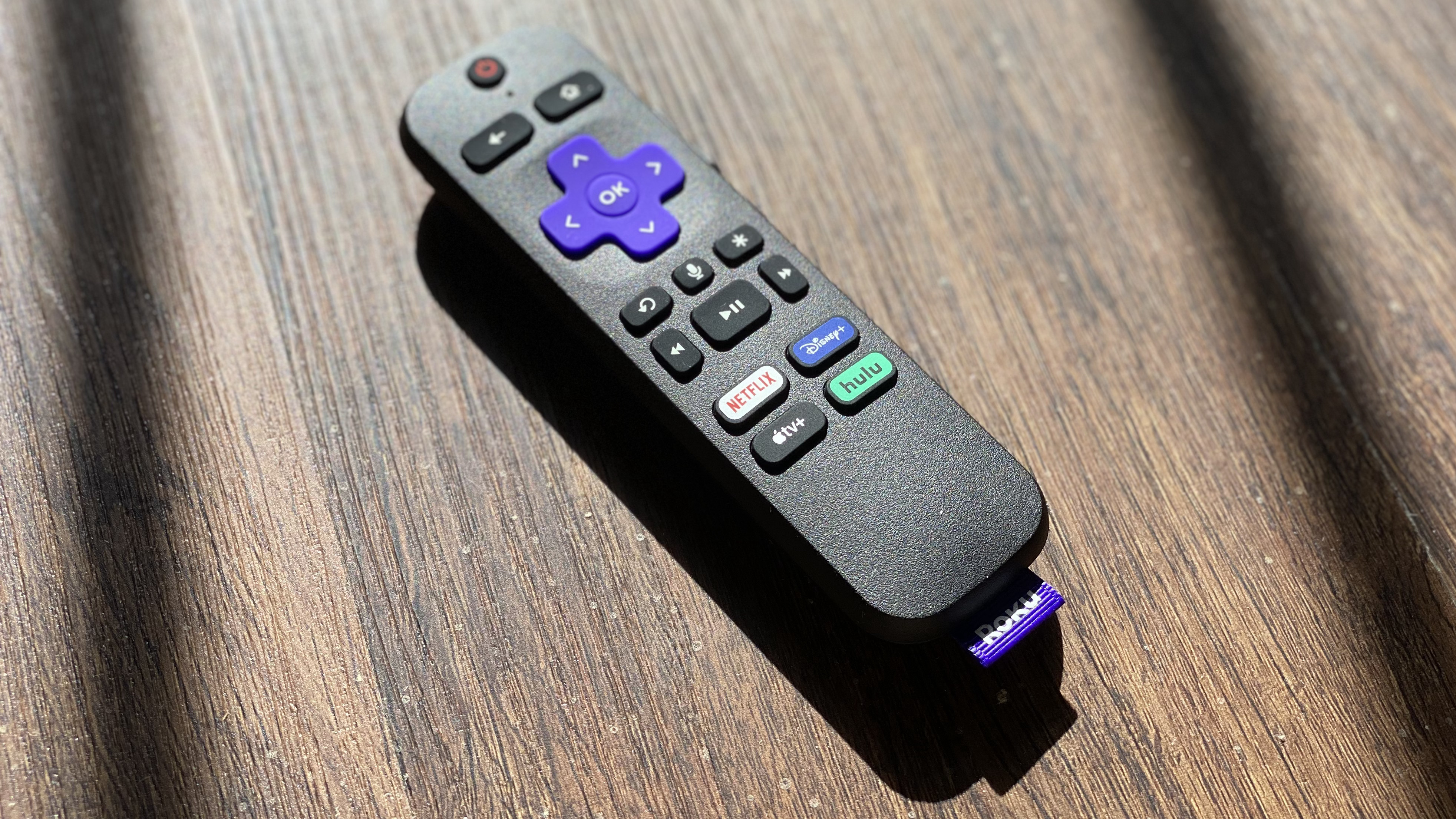TechRadar Verdict
The new Roku Streaming Stick 4K (2021) offers a few new appealing features like support for Dolby Vision and HDR10+ and faster startup speed, plus switching between apps feels even quicker than before. It has a few minor sticking points, but for the price it's a rock-solid option.
Pros
- +
Faster boot up speed
- +
Dolby Vision and HDR10+ support
- +
Long-range Wi-Fi
Cons
- -
Roku UI is a bit old
- -
Steep competition
- -
Remote pairing problems
Why you can trust TechRadar
One-minute review
The Roku Streaming Stick (2021) isn’t quite the massive overhaul we were expecting for Roku’s popular mid-range streaming stick, but it does offer some nice upgrades like Dolby Vision and HDR10+ as well as a new processor that should speed up the startup process.
That faster processor means that apps will load faster and switch seamlessly, while the improved Roku mobile app is more helpful when you’re not right next to your streaming stick. Last but not least, the Stick’s unique selling point - longer Wi-Fi range - remains intact and as functional as ever.
There are a few sticking points worth mentioning. For one, this is still the same ol' Roku that you remember from five years ago. The UI is practically unchanged outside of a few sections, and you'll still have to individually open every app to see what new shows and movies are available. Considering that similarly-spec'd devices like the Chromecast with Google TV are the same price, that's a bit of a bummer, but it doesn't prevent the Roku Streaming Stick from being a rock-solid value.
Overall, if you want a new Roku streaming device to speed up your aging smart TV or just want a reliable streaming stick that will get you through the next few years before your next big purchase, the Roku Streaming Stick 4K (2021) has you covered.
Price and release date
The new Roku Streaming Stick 4K became available in mid-October 2021 and was released alongside the Roku Streaming Stick 4K+ that includes the Roku Voice Remote Pro.
In terms of pricing you’re looking at $49.99 / £49.99 (around AU$70) for the Roku Streaming Stick 4K and $69.99 (around AU$100) for the Roku Streaming Stick 4K+.
Compared to the competition, that’s incredibly close to the brand-new Amazon Fire TV Stick 4K Max that costs $54.99 / £55 / AU$99 and the Chromecast with Google TV that goes for $49.99 / £59.99 / AU$99. Both of those players offer similar features to the new Roku Streaming Stick 4K and, for some, might even be better values.
Sign up for breaking news, reviews, opinion, top tech deals, and more.

Design
The new Roku Streaming Stick looks a lot like the old Roku Streaming Stick. It’s about the size of a USB thumb drive and it plugs right into the HDMI port on your TV.
To get power, you’ll either need to plug it into a USB port on the TV or use the included power adapter to plug it into the wall.
You’ll notice that in between the head and tail of the streaming stick is a solid plastic bar - that’s the long-range Wi-Fi antenna. To maximize its range Roku recommends keeping it away from the HDMI ports on the TV and making sure it doesn’t get tangled up with other cords. If it does, you might not get the maximum range from the antenna.
Also included in the box is a Roku voice remote with two AAA batteries. Weirdly our remote didn’t sync up with our player - potentially, Roku says, because there are a number of other Roku devices elsewhere in the house - but we were able to get it connected to a Roku Voice Remote Pro.
Admittedly there’s not a huge difference between the two remotes but the Pro offers an always-listening assistant that can be summoned with “Hey Roku” and a rechargeable battery.
That being said, you don’t always need to use the remote if you don’t want to. The Roku Streaming Stick 4K supports Alexa and Google Assistant voice commands, as well as AirPlay 2 streaming from iPhone, iPad or Mac. You can also replace the remote entirely with the Roku app that allows you to control the streaming stick and offers private listening.

Performance
Based on everything we knew about the new Roku Streaming Stick, we were expecting a moderate boost in performance, and that's exactly what we got: with a new SoC installed the Roku Streaming Stick does offer a slightly faster boot up speed (around 30%) and a hair faster navigation. Apps opened quickly without almost any load time, and for apps like Netflix and Amazon, the screen filled with title cards allowing us to practically jump right in to the next show.
We also appreciate seeing both Dolby Vision and HDR10+ support on the streaming stick and slightly faster connection speeds. With both HDR formats on-board you can buy pretty much any model of high-end HDR TV from Samsung, LG or Sony and be able to watch shows and movies in every format.
Watching shows like The Book of Boba Fett on Disney Plus looked great in HDR and never stuttered on our 80+ Mbps connection.
On the user interface front, we haven't seen much change in the last few years, however Roku has done a good job of keeping up on the latest streaming services. Currently, you can find all the mainstay apps like Netflix, YouTube, Amazon, Hulu and more, alongside the most recent crop of services like HBO Max, Disney Plus and Peacock. Last year we almost lost YouTube TV from the service due to an ongoing conflict between Roku and Google, but that has since been resolved.
Where Roku says it’s putting more of its innovation is in the Roku app that now allows you to stream content from the Roku Channel anywhere and will soon support up to four devices for private listening.
The downside to investing in the app rather than making major changes to the player itself is that there’s then little reason to upgrade. If you already have a 4K HDR streaming stick from Roku - even one that doesn’t offer Dolby Vision / HDR10+ support - you’ll still see about 90% of the same features and performance as the latest model.

Should you buy the Roku Streaming Stick 4K (2021)?
Buy it if...
This is your first Roku device
For first time buyers and folks looking to upgrade their first- or second-gen Roku devices, the new Roku Streaming Stick 4K is a very good value, offering modern specs and formats at a great price.
Your TV is a few rooms away from your router
For many of us, our routers aren't right next to our living room TV. Sometimes that means our smart TVs don't get the best Wi-Fi reception and wreak havoc on your streaming experience. The Roku Streaming Stick 4K fixes that with a long-range antenna that should do a better job latching onto your Wi-Fi.
You're looking for an affordable way to stream Dolby Vision content
With Disney Plus and Netflix spearheading the Dolby Vision invasion, you might be on the lookout for an affordable streamer that can keep up with the better HDR format. Anyone in that camp will certainly appreciate the Roku Streaming Stick 4K.
Don't buy it if...
You want a more modern UI
We appreciate that Roku wants to keep its user interface simple for the less savvy technology crowd, but it's really held the company back from improving discovery of new content and adding other key features that the competition has.
You have a Roku streaming device made within the last two years
While Roku has made some changes to the internal hardware of the Roku Streaming Stick 4K, there's not much new here in the way of features. Yes, Dolby Vision support is great if you subscribe to Netflix's UHD tier, but folks who typically pay for the lower streaming tiers won't see much of an advantage here.

Nick Pino is Managing Editor, TV and AV for TechRadar's sister site, Tom's Guide. Previously, he was the Senior Editor of Home Entertainment at TechRadar, covering TVs, headphones, speakers, video games, VR and streaming devices. He's also written for GamesRadar+, Official Xbox Magazine, PC Gamer and other outlets over the last decade, and he has a degree in computer science he's not using if anyone wants it.
